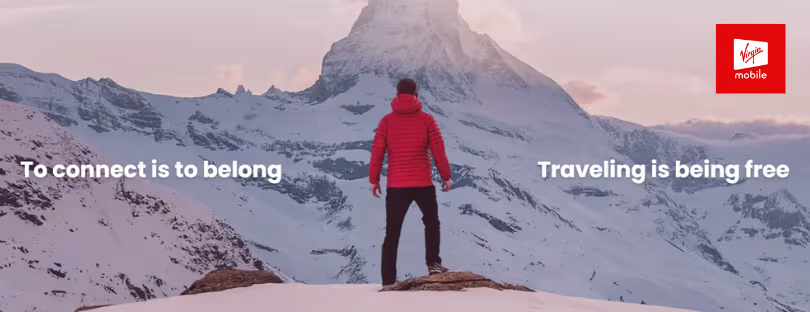
The Future of Airport Wi-Fi? Just Scan and Install an eSIM
Let’s talk about airport Wi-Fi — or more specifically, how incredibly frustrating it still is in 2025.
You land after a long flight, you’re groggy, you’re trying to pull up your hotel reservation or message someone that you’ve arrived, and what do you get instead? A clunky captive portal. Pages that don’t load. Confusing instructions in five languages. You might get 30 minutes for free — if you give them your email, passport number, or soul. Then, just as you finally connect, you get booted off, and you’re back at square one.
It’s 2025. We can do better.
So here’s a bold idea: what if we just ditched airport Wi-Fi portals altogether and replaced them with eSIMs? Instant access. No logins. Just scan a QR code, download a local eSIM, and boom — 1GB of data for free or for €1. You’re online. You’re in control. You’re not a hostage of bad UX.
Let’s break this down.
The Problem with Airport Wi-Fi Today
Airport Wi-Fi feels stuck in the early 2000s. You know the drill:
- You connect.
- It redirects you to a slow, bloated splash page.
- There’s a clunky registration form, maybe even a forced survey.
- Some networks require an SMS confirmation — ironic when you’re trying to connect because you don’t have mobile service.
- The free tier is often time-limited or bandwidth-capped, while the premium version is overpriced and buggy.
In short, airport Wi-Fi is still a pain. And for international travelers — especially those without roaming or a local SIM — it’s not just annoying, it’s disabling. You can’t use maps, rideshares, translation apps, or anything else that’s become second nature in daily travel.
Airports pride themselves on being global gateways. But their connectivity experience? It’s anything but seamless.
The eSIM Alternative: Just Scan, Install, and Go
Now imagine this instead.
You walk through arrivals or a terminal, and see a sign that says:
“Need Internet? Scan Here. Get 1GB Instantly via eSIM — Free or €1.”
You scan the QR code with your camera.
It takes you to a clean, fast-loading page. It auto-detects your phone model and confirms you have eSIM support.
With one tap, your phone installs a prepaid eSIM that’s already configured for airport connectivity—or better, for local data usage around the city too.
Boom. You’re connected. No forms. No SMS verification. No portal gymnastics.
Just fast, secure internet — as it should be.
Why This Is Actually Very Doable
This isn’t sci-fi. The tech is already here.
eSIMs are now supported by every major smartphone brand: iPhones, Samsung Galaxy, Google Pixel, even budget models from Xiaomi and Motorola. Installing an eSIM takes under 30 seconds. And eSIM providers already offer global coverage — many with better rates than what telcos charge for roaming.
So why not rethink airport Wi-Fi from the ground up? Forget the captive portal model. Treat every traveler as a user who deserves a real connection, not a one-time login.
And if you think airports will never give away 1GB for free, here’s the thing: they already are, sort of. Many airports offer 30 or 60 minutes of “free” Wi-Fi per device. But that experience comes with hidden costs: ads, data harvesting, app installs, and a terrible user journey. With an eSIM, they could offer something far better — and possibly for less money.
Who Would Pay for This?
Let’s talk business. If airports aren’t charging travelers, who’s footing the bill?
Option 1: Sponsorship. Picture this — “1GB of Free Data, Powered by Revolut” or “Compliments of Turkish Airlines.” Brands would love the visibility. And it’s way more valuable than a banner ad on a login page.
Option 2: Paid Upgrades. The first gigabyte is free or €1. After that, users can top up — €3 for 3GB, €5 for 10GB, whatever. It’s fair, it’s transparent, and it’s better than roaming fees.
Option 3: Airport Experience Boosters. Airports could bake this into their loyalty or app ecosystem. Scan to connect, earn points, and get airport perks. Everyone wins.
Security, Speed, and Simplicity
Beyond the convenience, there are real benefits to ditching public Wi-Fi in favor of eSIMs:
- Security: eSIMs use cellular networks, not open Wi-Fi. No more sketchy networks or man-in-the-middle attacks.
- Speed: LTE and 5G generally outperform public Wi-Fi, especially in crowded terminals.
- Simplicity: One scan and you’re done. The UX is infinitely cleaner than anything Wi-Fi login pages can offer.
So… Could This Be the New Standard?
Absolutely. And if you ask me, it should be.
Airports are modernizing everything from biometric boarding to baggage tracking. But connectivity? Still an afterthought. The eSIM approach solves the core pain point: it makes internet access as seamless as grabbing a coffee — and just as essential.
And think of the ripple effect. With instant eSIMs:
- International travelers arrive connected.
- Business travelers can jump into calls or emails right away.
- Tourists can order Ubers, translate menus, and navigate cities within minutes.
- No more waiting in SIM card queues or dealing with bad Wi-Fi.
Even local telecoms might jump in and say: “Hey, welcome to France! Here’s 1GB to get you started.” That’s not just UX — that’s customer onboarding done right.
What Needs to Happen Next?
For this to work, a few things need to align:
- Airports need to partner with eSIM providers
- UX needs to be frictionless. No long forms. No app installations unless optional.
- Multilingual support is key. Think icon-led, intuitive design.
- Clear privacy policies and opt-ins — trust is everything.
And let’s not forget: travelers need to know it’s even an option. Awareness is half the battle.
Final Thoughts: It’s Time to Move On
Wi-Fi was a good run. But it’s not aging well in the fast-moving world of travel.
The future is about seamlessness, privacy, and speed. And honestly, nothing says “welcome” better than giving someone instant, hassle-free connectivity when they land in a new country.
So the next time you’re stuck at an airport, fumbling with a laggy Wi-Fi portal, just imagine:
A clean sign, a quick scan, 1GB in your pocket. You’re online and in control.
It’s not just a better UX. It’s the experience we should’ve had all along.
Let’s make it happen. ✈️📶










